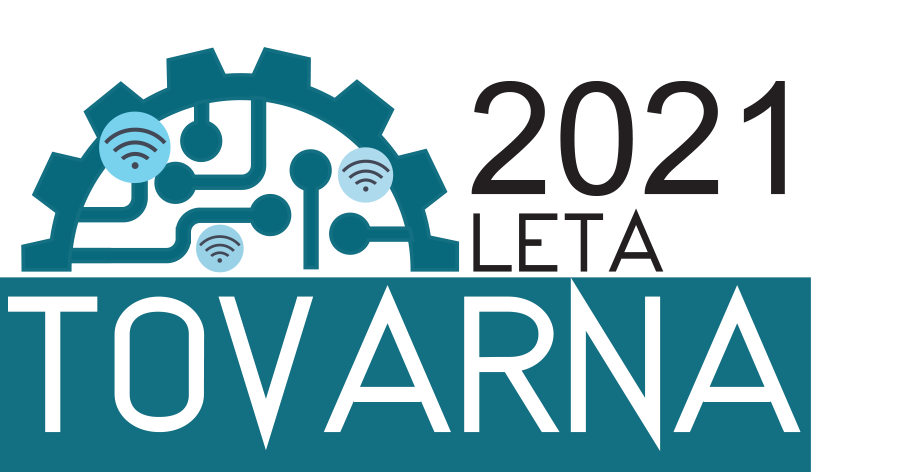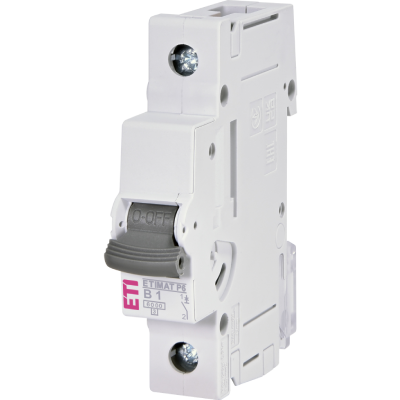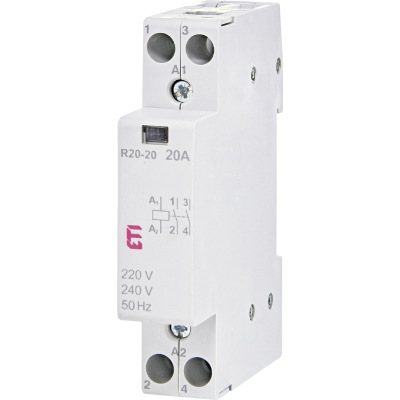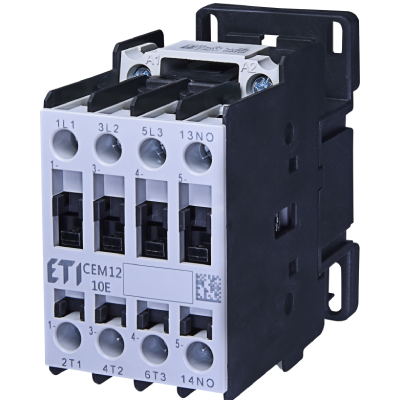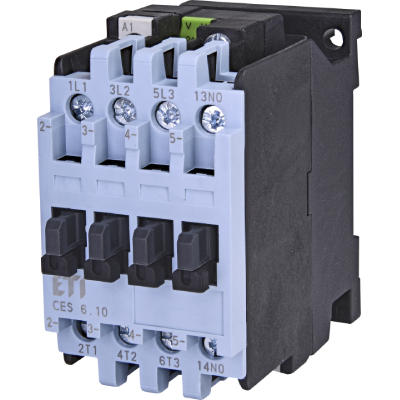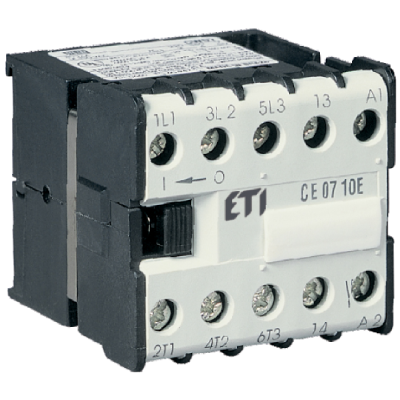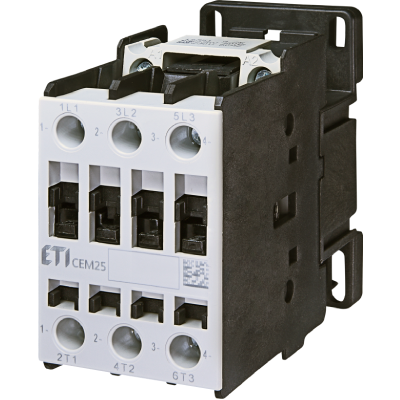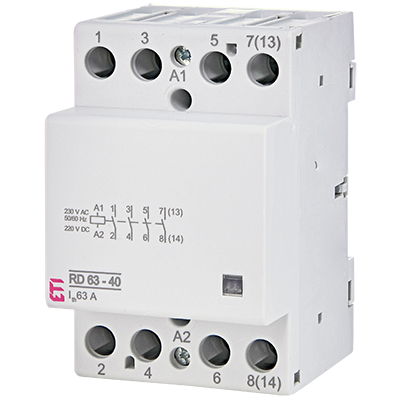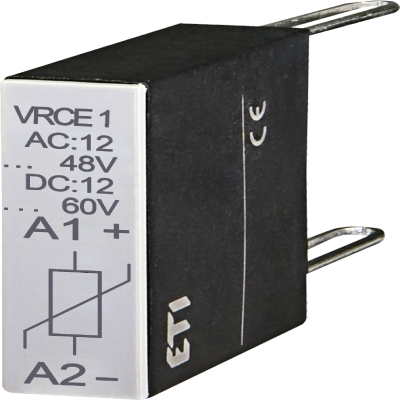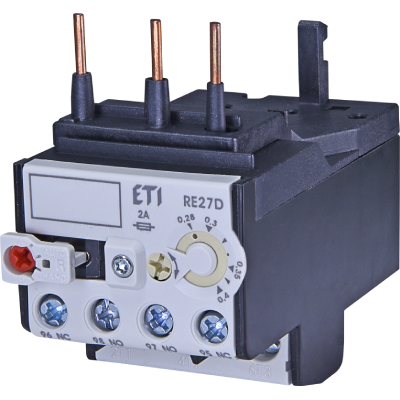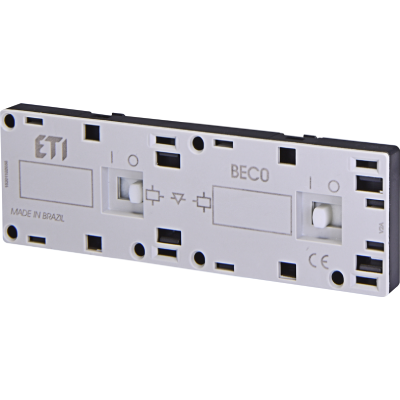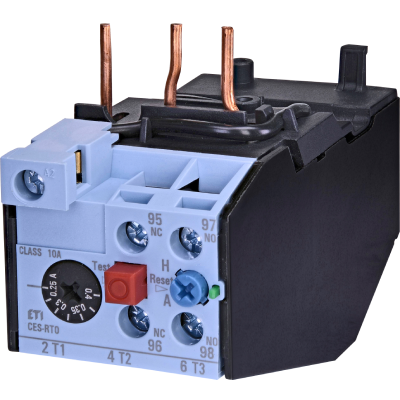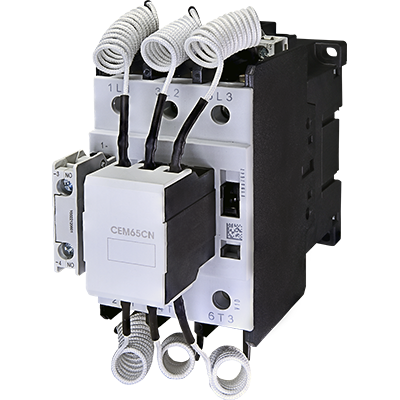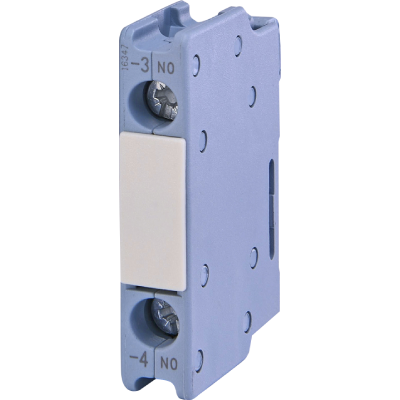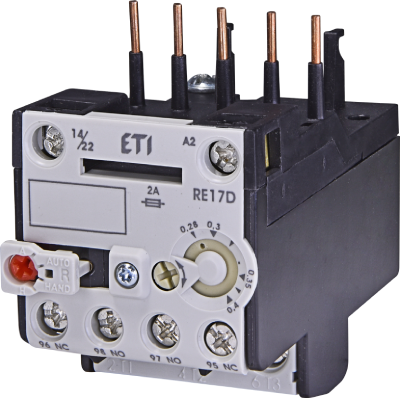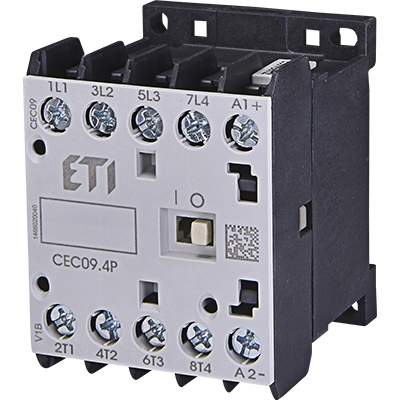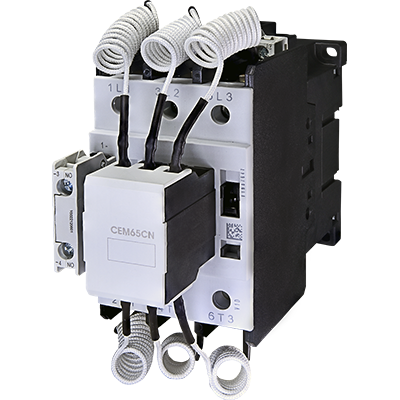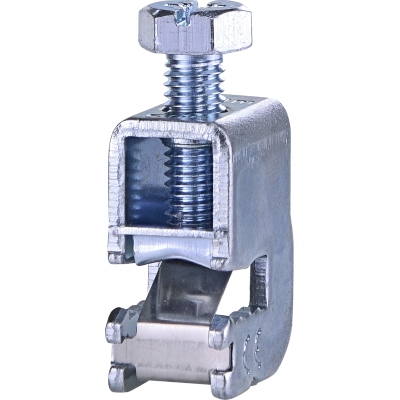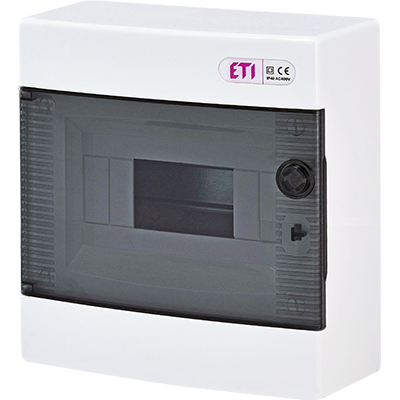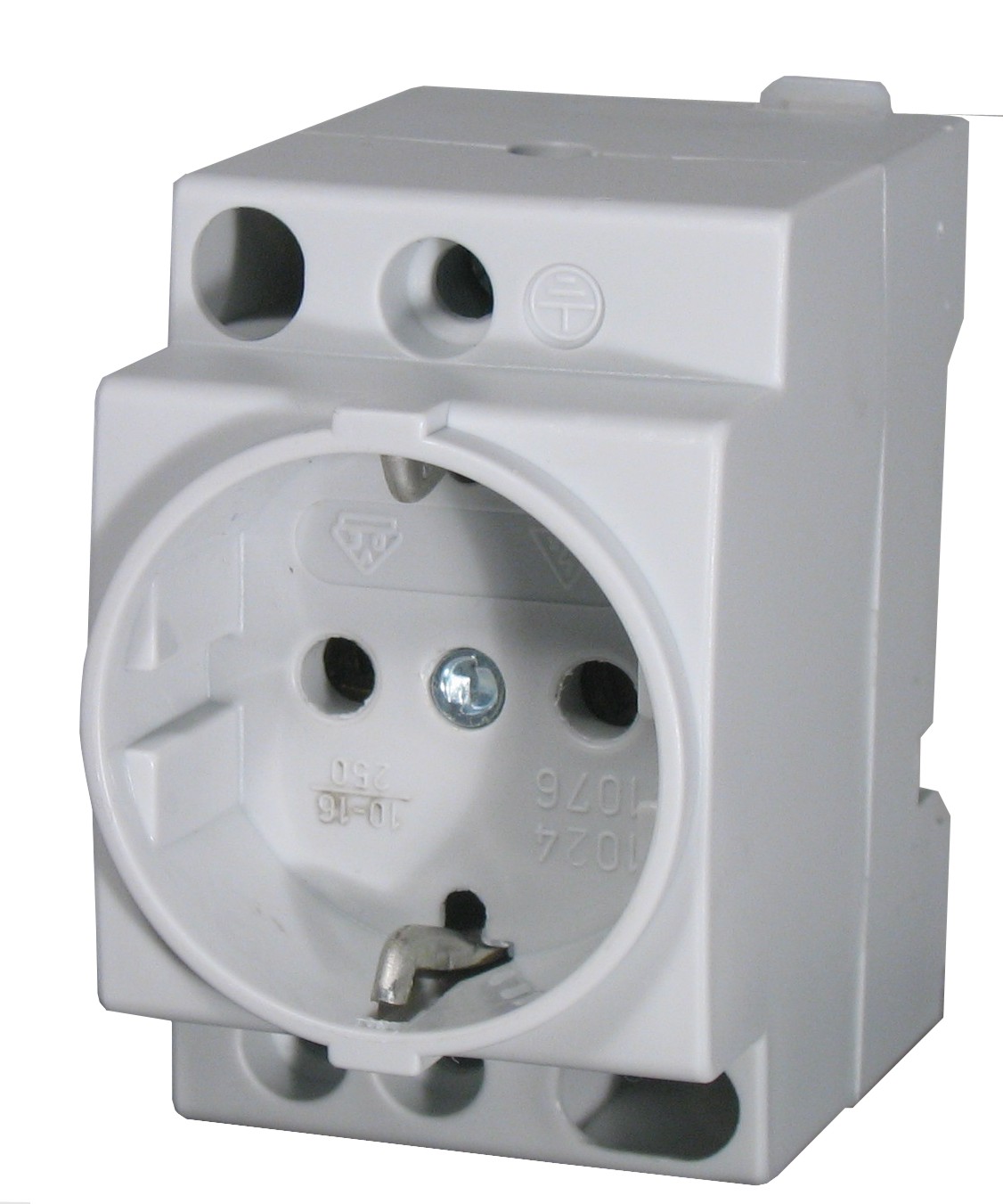Most Common Tripping Characteristics in Miniature Circuit Breakers Explained
Understanding the tripping characteristics of MCBs is crucial for selecting the appropriate MCB type based on the anticipated load and protection requirements of electrical circuits, ensuring efficient and reliable electrical protection. The tripping characteristic, also known as the I-t curve, determines how quickly an MCB cuts off current during overloads or short circuits. The three most commonly used tripping characteristics are B, C, and D. We explain the differences between them and their use cases.
1. How a Miniature Circuit Breaker (MCB) works
Miniature circuit breaker is an automatic switching device used to protect low-voltage electrical conductors and cables from short circuits and overloads. MCB's are available in single-pole, double-pole, triple-pole, and four-pole configurations.
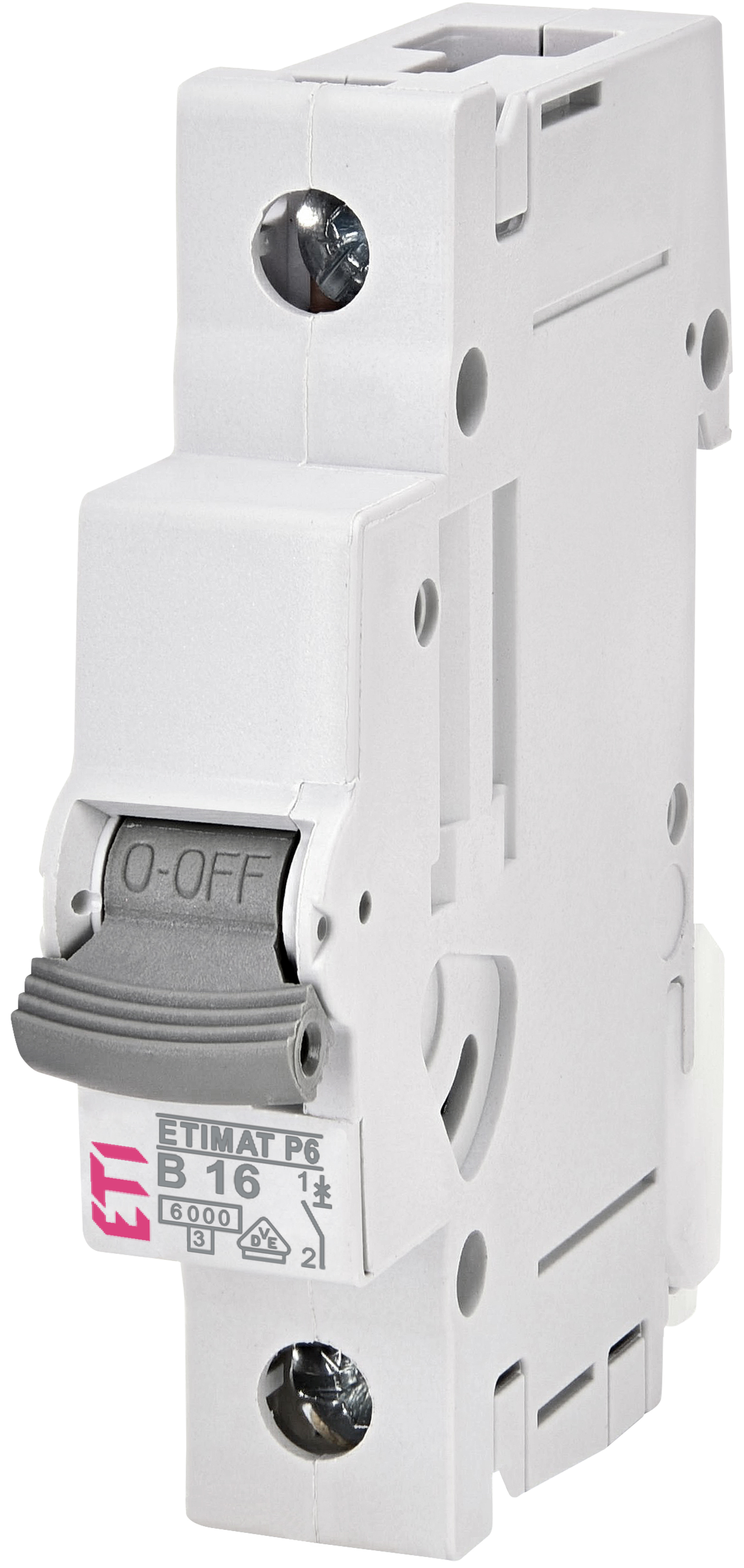
Figure 1: Single-pole MCB (suitable for installation in residential distribution boards)
Figure 2 shows the built-in MCB's in a residential distribution board.
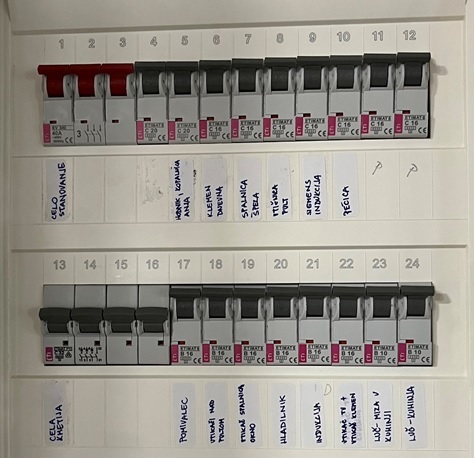
Figure 2: Built-in MCB's in a residential distribution board
In residential applications, we commonly use MCBs to protect the electric cables, which supply lighting circuits (typically a 10-ampere MCB) and circuits for outlets, stoves, etc. (typically a 16-ampere MCB).
Each pole of an MCB includes:
a) Thermal release, which utilizes the property of a bimetallic disk (or bimetallic strip, depending on the technology) to bend and cause a trip when heated by current. Its operation has an inverse time-delay characteristic and depends on the thermal action of the current flowing through the tripping unit. In other words, the larger the overload current, the shorter the trip time. The thermal release provides protection against overloads. (see Figure 3, 4 - tripping characteristics of an MCB).
b) An electromagnetic tripping unit, which is also an overcurrent release, the operation of which depends on the force exerted by the current of the main circuit, which feeds the coil of the electromagnet. In the case of a sufficiently large current (a multiple of the nominal current of the installation circuit breaker), the tripping is instantaneous - a few milliseconds. Their task is to protect against the effects of short-circuit currents.
Depending on the level of cut-off current, we separate type B MCBs, where the cut-off is between 3 to 5x rated current, type C MCBs with 5-10x rated current and type D MCBs with 10-20x rated current.
In the event of overload or short circuit, the MCB interrupts the circuit, and after the fault is resolved, it can be reset without replacing a fusible element, as is it's main advantage compared to conventional fuses.
2. Overload and short circuit
Let us explain the difference between overload and short circuit using a simple example. Overloading of a conductor or cable happens, when an electric current, greater than what the cable can withstand (permissible current of said cable) flows through it. Based on the expected load of each circuit, the electrical designer selects the appropriate cross-section of the cable, and based on this, the appropriate MCB is also selected (its rated current in amperes is important).
In the event that the current is greater than permissible, the MCB must react and interrupt the circuit. For example: due to an improperly executed electrical installation, two consumers are powered via a 16 amp MCB: for instance an electric stove with an oven and a dishwasher. Let's assume that at the same time everything is turned on and a current of 32 A flows through, which is twice the 16 amps (2 times the rated current). We are talking about an overload, and the MCB must trip, because the cable cross-section of 2.5 mm2 cannot withstand such a large current (shortening the life of the cable insulation, but also a fire can occur due to overheating). The MCB, produced according to standards, has a predetermined tripping time. In our case, this time would be somewhere between 32 seconds and a good 2.5 minutes. (see figure 3,4)
In the event of a short circuit, for instance if the phase conductor ( black or brown wire) and the neutral conductor (blue wire) come into contact, a short-circuit current of several 100 A will flow due to the very low resistance and the MCB will switch off instantly (few milliseconds).
3. Tripping Characteristic or I-t Curve of a Miniature Circuit Breaker B 10
The tripping characteristic is a property of the circuit breaker that determines how quickly the circuit breaker will cut off current when an overload or short circuit occurs.
Simply put, the tripping characteristic tells how quickly the circuit breaker will shut off the current in the event of a problem in the electrical installation. There are three main types of tripping characteristics: B, C and D. Let's take a look at characteristic B first.
Figure 3 shows the I-t or tripping characteristic of a 10 A type B MCB. If the current is 10 A or less, there is no tripping. If the current is greater than 10 A, tripping occurs, the higher the current, the faster the tripping occurs. Thus, the characteristic shows three cases of overload: 1.5 times the rated current (1.5 x In), 2 times the rated current (2 x In) and 2.5 times the rated current (2.5 x In).
In the case of a short circuit, where current can be between 3 to 5 times the rated current but is usually considerably higher, often over 100 A, the electromagnetic tripping unit reacts, resulting in immediate tripping.
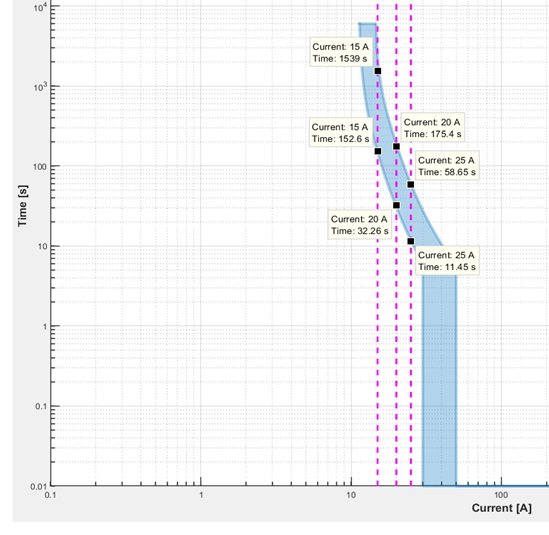
Figure 3: Output using the ETISON program, ETI B10 MCB, indicating that, for example, at twice the rated current, the trip time will be between 32 s and 175 s.
Table 1 displays the tripping times for various overload currents (x In) of a B10 MCB on Figure 3, which shows the I-t characteristic of said MCB.
I(A) | x In | t(s) |
15 | 1,5 x In | 152 s -1539 s |
20 | 2 x In | 32 s – 175 s |
25 | 2,5 x In | 11s - 58 s |
≥ (30-50) | (3-5) x In
| Instantaneous tripping (a few ms) - electromagnetic tripping unit trips |
Table 1: Tripping times for various overload currents (x In) of a B10 MCB
3. When are C and D types used?
Figure 4 shows the I-t characteristics B, C and D. We have already learned about the tripping characteristic of type B. Where is the difference compared to C and D? If we look carefully at the characteristics, we find the following: all three types work the same in the overload area - i.e. at the same time. The difference is in the operation of the magnetic or short-circuit tripping unit. In case of type B, the MCB trips immediately for currents between 3 and 5x rated current. In case of type C, the instantaneous tripping is at 5-10x rated current and in case of type D the instantaneous tripping will be at 10-20 x rated current.
If we look at table 1, and if we had, for example, instead of B10 MCB, a C10 MCB, the instantaneous tripping (line 4 in table) would be between 50 and 100 A or greater current. And in case of a D10 MCB, there would be instantaneous tripping between 100 and 200 A or greater current. The times in case of overloads would be the same.
So, when should we use type C or type D instead of the usual type B MCB? Type C comes in handy when we intend to connect consumers with a high starting current through this protected circuit, such as asynchronous motors which could trip the MCB unnecessarily at start-up.
However, it should be noted that the MCB protects the cable, but the motor still needs adequate motor protection (bimetallic relay or a motor circuit breaker).
Type D would be suitable for protecting circuits connected to devices with significantly high inrush currents, such as transformers (variacs, welding transformers), or when switching capacitors.
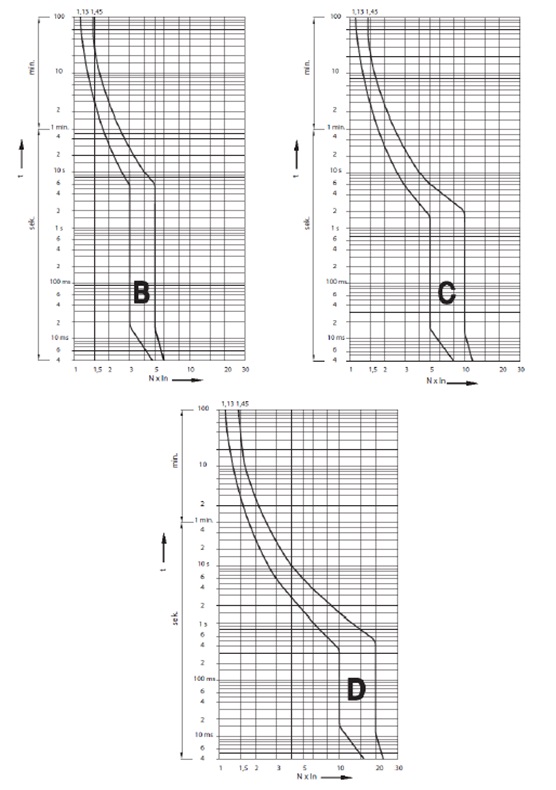
Figure 4: I-t characteristics of B, C, and D MCB.

